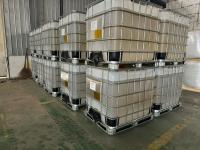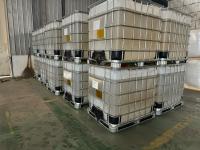Our Products
Product Center / Top and largest polyamine maufacturer in china

Polyamine is a high-performance, water-soluble cationic polymer widely used in water and wastewater treatment, paper manufacturing, mineral processing, and a variety of industrial processes. It is typically available as a clear to pale-yellow viscous liquid with high charge density and moderate molecular weight. The main chemical structure of polyamine is based on a polymerized amine backbone, which gives it a strong positive charge that allows it to effectively neutralize negatively charged particles, colloids, and organic matter present in water systems. The main application of polyamine centers around its role as a primary coagulant, charge neutralizer, and flocculation aid, providing effective clarification, dewatering, and pollutant removal in different industries.
1. Water and Wastewater Treatment Applications
One of the largest and most important applications of polyamine is in water and wastewater treatment. Due to its cationic nature, polyamine is an effective coagulant used to destabilize negatively charged particles and colloids, promoting rapid aggregation and settlement. In municipal and industrial wastewater treatment plants, polyamine serves as a key chemical in the coagulation–flocculation process to remove suspended solids, turbidity, and organic contaminants.
Polyamine is especially effective in treating raw water, surface water, and process water for drinking or industrial use. It enhances the removal of turbidity caused by fine suspended matter such as clay, silt, algae, and organic material. In wastewater systems, polyamine is applied to clarify effluents, reduce color, remove oil and grease, and lower chemical oxygen demand (COD) and biological oxygen demand (BOD).
In municipal wastewater treatment, polyamine improves solid-liquid separation efficiency and promotes sludge settling. It is often used as a replacement for traditional inorganic coagulants like alum, ferric chloride, and polyaluminum chloride (PAC), as it generates less sludge and functions effectively over a wider pH range. In industrial wastewater systems, polyamine is used for treating effluents from chemical plants, textile dyeing facilities, tanneries, food processing industries, and refineries, where it helps remove dyes, heavy metals, emulsified oils, and colloidal impurities.
Polyamine also serves as a sludge conditioner and dewatering aid. When added to sludge prior to mechanical dewatering, such as with belt filter presses or centrifuges, polyamine promotes the formation of larger, denser flocs that release water more efficiently. This results in drier cake solids and reduced sludge disposal costs. Because it acts as a primary coagulant and charge neutralizer, it can be used alone or in combination with anionic or nonionic polyacrylamides to enhance performance.
2. Paper and Pulp Industry
In the paper and pulp industry, polyamine plays a vital role in both process water treatment and paper quality improvement. It acts as a retention and drainage aid, a fixing agent, and a pitch control additive. During paper manufacturing, fine fibers, fillers, and additives often remain suspended in water and are lost with white water. Polyamine helps retain these fines and fillers on the paper sheet by neutralizing the negative charges of cellulose fibers and mineral fillers, leading to improved retention and higher yield.
As a drainage aid, polyamine enhances water removal from pulp suspensions during sheet formation, improving machine speed and productivity. In addition, polyamine functions as a fixing agent for anionic trash and pitch (resinous materials released from wood), preventing deposits on machine surfaces. This improves machine cleanliness, reduces downtime, and enhances overall paper quality.
Polyamine is also widely used in paper effluent treatment, where it removes residual color, lignin derivatives, and organic compounds from process water. It clarifies the white water system, reduces turbidity, and lowers COD, allowing the treated water to be recycled or safely discharged. The cationic charge of polyamine is particularly effective in decolorizing effluents from bleaching operations and dyeing processes in colored paper production.
3. Mining and Mineral Processing
Polyamine finds extensive application in mineral processing and mining operations, where it acts as a coagulant and flocculant for tailings and clarification of process water. In beneficiation processes such as flotation, leaching, and ore washing, fine solids and colloids must be separated from water to recover valuable minerals and recycle clean water.
Polyamine is used for solid-liquid separation, clarification of thickener overflow, and treatment of tailings ponds. It helps in aggregating ultra-fine particles and clay minerals, allowing rapid sedimentation and clear water recovery. The use of polyamine in combination with anionic polyacrylamide significantly improves floc strength and settling velocity.
In coal washing plants, bauxite refining, phosphate beneficiation, and sand/gravel operations, polyamine helps recover process water, reduce waste disposal, and enhance overall plant efficiency. It is especially valuable where the process water contains high concentrations of negatively charged mineral slimes that are difficult to settle using inorganic coagulants alone.
4. Textile, Dyeing, and Color Removal Applications
Polyamine is highly effective in color removal applications for textile and dyeing wastewater. The effluents from textile manufacturing and dyeing operations typically contain high levels of synthetic dyes, surfactants, and organic matter that impart strong color and turbidity. Polyamine’s strong cationic charge enables it to bind with negatively charged dye molecules, forming insoluble complexes that can be easily removed by sedimentation or filtration.
This property makes polyamine one of the most effective color removal agents for treating reactive, direct, acid, and disperse dye wastewater. It helps reduce color intensity, COD, and suspended solids simultaneously. Moreover, it works well under neutral or slightly alkaline pH, reducing the need for additional pH adjustment chemicals. In many facilities, polyamine is used in combination with other coagulants such as polyDADMAC or alum to achieve higher efficiency.
5. Oilfield and Petrochemical Applications
In oilfield water treatment, polyamine serves as a coagulant and demulsifier for produced water and injection water systems. It promotes the separation of oil and suspended solids from water, enhancing water clarity before reinjection or disposal. In refinery wastewater, polyamine removes emulsified oil and suspended hydrocarbons, improving the performance of downstream treatment units.
Polyamine is also used as part of coagulant blends in desalters, boiler feedwater treatment, and cooling tower systems, where it enhances clarification and prevents fouling. Because polyamine produces less sludge than metal salts and maintains stable performance over a wide pH range, it has become a preferred choice in modern oilfield water treatment systems.
6. Advantages of Using Polyamine
Polyamine offers several advantages over traditional inorganic and organic coagulants:
-
High charge density: Provides rapid neutralization of negative colloids and efficient floc formation.
-
Wide pH tolerance: Works effectively in acidic, neutral, and alkaline conditions.
-
Low sludge production: Generates less sludge compared to aluminum or iron salts.
-
Compatibility: Can be used alone or as a coagulant aid with polyacrylamides or PAC.
-
Enhanced clarity: Produces clear supernatants and faster sedimentation rates.
-
Environmentally friendly: Non-toxic, non-corrosive, and biodegradable in most applications.
Conclusion
The main application of polyamine is as a cationic coagulant and flocculant in water and wastewater treatment, paper manufacturing, mineral processing, and industrial effluent treatment. Its versatility and effectiveness stem from its strong cationic charge, which enables rapid neutralization of negatively charged particles, leading to efficient solid-liquid separation and water clarification. Whether used alone or in combination with anionic polymers, polyamine ensures improved water quality, reduced sludge generation, and enhanced process efficiency. Therefore, polyamine has become a critical chemical for achieving sustainable and cost-effective water treatment and industrial processing solutions across multiple sectors.



706_small.jpg)
146_small.jpg)
